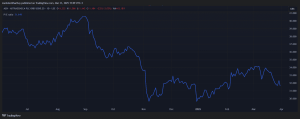History shows that the most successful ISA investors are those ‘early birds’ who invest early in the tax year. Over time, they tend to achieve the greatest capital gains and the highest dividends, as their money is working for them for longer.
With the new fiscal period around the corner, I’m looking at ways that an individual could maximise their passive income in 2025/26. Here’s one strategy for investors to consider.
Choosing ISAs
It’s fair to say that most of us have heard of the Stocks and Shares ISA. Acccording to NatWest, 60% of Brits are aware of these tax-efficient products (though less encouragingly, just 38% understand how they work).
By comparison, the Lifetime ISA is recognised by fewer than half of us (44% in fact). And the number of people who understand how they operate is a paltry 22%.
This is a missed opportunity, in my view. Okay, these products have some significant downsides compared to the Stocks and Shares ISA. Peculiarities include withdrawal penalties before the age of 60, and a lower annual allowance of £4,000.
In addition, someone can only open a Lifetime ISA between the ages of 18 and 39, and contribute to one until they reach 50.
However, the Lifetime ISA also offers a large lump of cash from the government, up to a maximum of £1,000. This is an extremely handy weapon in helping investors to build long-term wealth.
Divide and conquer
If someone uses £4,000 of their £20,000 ISA allowance on a Lifetime ISA, they get an additional £1,000 from the government. This means they could have £5,000 in their Lifetime ISA, plus £16,000 in a Stocks and Shares ISA, totalling £21,000.
This is great as, naturally, the more money an individual has to buy shares, the greater dividend income they can potentially make. But of course, the exact amount will depend on dividend yields and the robustness of broker forecasts.
Let’s say someone invests £21,000 today in shares, trusts, and funds that yield a reliable 7.2%. They’d make £1,512 in dividends this year, which is £72 more than if they didn’t have that extra £1,000.
Over time, this can add up to a significant amount of money. The size of the dividends could also rise in value. When considering the compounding effect, too, where dividends are reinvested, the long-term benefit to investors’ wealth can be considerable.
A top fund
As I say, it’s important to remember that dividends are never guaranteed. However, one way that investors can target a dependable passive income is by diversifying.
The Global X SuperDividend ETF (LSE:SDIP), for instance, is one investment that can help investors achieve this. This exchange-traded fund (ETF) holds shares spanning different regions and sectors including energy production, real estate, and financial services.
Comprising 100 of the planet’s highest-yielding companies, the fund’s forward dividend yield is a whopping 11.1%. What’s more, it’s made monthly distributions for 13 consecutive years, underlying the strength it enjoys through that diversified approach.
One drawback is that the fund is sensitive to wider movements on share markets. It’s also worth noting that ultra-high company dividend yields can sometimes be unsustainable.
Yet the Global X SuperDividend ETF’s investment in scores of dividend shares helps balance out these risks. And over time, its diversified approach could yield a stable and reliable stream of dividends.
This post was originally published on Motley Fool







